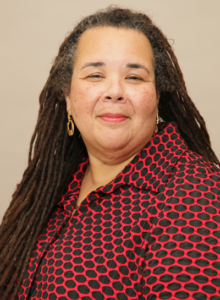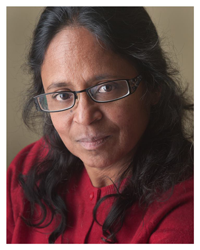anti-racism
Select an item by clicking its checkbox

Race Talk and the Conspiracy of Silence: Understanding and Facilitating Difficult Dialogues on Race
Date Reviewed: February 24, 2016
This is a book finding its time, perhaps just in time. A sequel to Microaggressions in Everyday Life: Race, Gender, and Sexual Orientation (2010), Race Talk and the Conspiracy of Silence offers the fruits of a ten-year period of research and observation of participants engaged in difficult conversations on race, racism, Whiteness, and White privilege. The purpose is fivefold: (1) to uncover the reasons that race talk is difficult, (2) to expose the explicit and hidden rules that govern how race is discussed in U.S. society, (3) to illuminate the detrimental consequences of a failure to honestly dialogue about race, (4) to outline the benefits of successful conversations on race, and (5) to propose solutions in overcoming obstacles to honest racial dialogues (xii). Sue accomplishes this purpose with clarity of style and balanced tone.
The first section defines race talk, its characteristics and dynamics, and then explores in chapter three the conflicting race realities in White Talk and Back Talk. “Race talk is truly a clash of different racial realities in which people of color and Whites perceive race issues in opposition to one another” (xiii). Through vignettes, questions, and psychologically adept analysis, Sue offers a compelling view of the ideological, psychological, and historical factors that do create radically opposed racial realities. He gently uncovers the realities whites are disinclined to see, and demonstrates the lived realities of people of color – all while shaming none. I particularly valued his argument for and demonstration of the importance of emotions in the classroom, with any redress of race talk requiring truly receiving and sitting with the wisdom that arises within emotional connection and disconnection.
The second section highlights the hidden ground rules embedded in society, academic settings, and one’s self that serve as barriers to honest race talk. Here you can find guidance and modeling for academic habits that consistently cloak racial realities. The third and fourth sections address, separately, why it is difficult to honestly talk about race. For people of color, “What are the consequences for saying what I mean?” and “To speak or not to speak, that is the question.” For whites, “I’m not racist!” and “I’m not White, I’m Italian.” Group considerations are also examined, difficult dialogues between groups of color.
The final section invites reflection by parents and teachers talking about race with children; namely, “taking responsibility for change means overcoming the inertia and feeling of powerlessness on a personal level” (214). Racial awakening happens in encounters that challenge preconceived notions, so Sue encourages such encounters with guidelines: (1) learn about people of color from sources within the group; (2) learn from healthy and strong people of the culture; (3) learn from experiential reality; (4) learn from constant vigilance of your biases and fears; and (5) learn from being committed to personal action against racism. To encourage you to get the book, I particularly appreciated Sue’s list of ineffective strategies, “Five Things Not to Do,” followed by eleven potentially positive actions. A lengthy volume, Race Talk and the Conspiracy of Silence should be required reading for educators of all levels.
The intent of racism is to dehumanize. Consequently, a prevalent strategy of racism is to convince caring people that non-white people are lacking - lacking in values, lacking in character, lacking in abilities, lacking in that which makes for good community, good neighbors, good teachers. Racism teaches that non-white people ...

Disrupting the Culture of Silence: Confronting Gender Inequality and Making Change in Higher Education
Date Reviewed: February 4, 2016
As an African American female associate professor in religious studies, I heard my voice and I felt heard as I read many of the essays in this book. It is intentionally intersectional, addressing race and ethnicity (and to some degree sexual preference) as well as gender. The editors and authors are scholars and administrators in the field of sociology, generally. With this book they interrupt the culture of silence in higher education, which remains the gendered domain of white males where women continue to experience inequality.
Case studies, personal narratives and experiences, qualitative (interviews) and quantitative research raise readers’ consciousness about oppressive structures and cultures that impact women in academe. Women have made gains in the academy in terms of their increased presence, but major challenges remain. In this sourcebook each essay builds on existing research and offers suggestions for changing oppressive structures and cultures.
The book is divided into five parts, each ending with a case study, and each chapter includes a list of resources. The final chapter offers models for engendering change. The book was born among scholars concerned with bringing together service, scholarship, and activism. While much is said about women faculty in general, a number of essays focus on nonwhite women and specifically black women as the “double minority” in the academy. They are less likely to be mentored, promoted to full professor, granted tenure, and more likely to leave the academy.
Part One addresses problematic structures, such as exclusionary practices (lower wages and less upward promotions) that require faculty action to address. Also significant are the horizontal impediments to shattering the glass ceiling and not just the vertical ones (increasing numbers of women). Another example is the uneven, inequitable service burden placed on women and the accompanying fairy tale advice to ‘Just say no to service,’ which only “exacerbates gender-blind sexism in academia.” In the latter case the author suggests that institutions “just don’t ask” unless they are prepared to acknowledge and reward women’s service labor. Part Two discusses the dissonance between structures and cultures. Often structures like institutional quotas and commitments to diversity work in favor of women’s presence, but institutional cultures are resistant, hostile, violent, and unhelpful. Part Three addresses exclusionary cultures, including those that protect disciplinary canons, perpetuate the white male as the “ideal professor,” and value problem portable over problem-based research, which devalue women and the interdisciplinary work of nonwhite women. Part Four discusses “chilly climates,” “contrapower harassment,” incivility, microaggressions, and mobbing that are pervasive and often unchecked. These behaviors have greater negative impact on women with consequences for their physical and emotional well-being and job productivity. One author suggests that women of color consider a “trauma-to-transformation” model that involves redefining self, brain detoxification, sense-making, and reconfiguring the social reality.
I highly recommend this book to institutions that value diversity (without which academic excellence does not exist) and desire to create a healthy, productive environment for a truly diverse and representative faculty and administration. I also recommend it for female and male faculty and administrators impacted by cultures of silence and who are interested in disrupting and dismantling those cultures.
Teaching for racial equality, and against oppression, has meant coming to grips with what my adult students (domestic and international) do not know, i.e. the basic concepts of race and the mechanisms of racism in the United States. Teaching about racial violence, domination and hatred invariably means asking students ...
Shortly after the verdicts in the Ferguson and Staten Island police beating cases led to protests via social media and demonstrations across the country, I found myself involved in two conversations. The first occurred with a car mechanic in Saratoga Springs, the small rural New York community where I work. ...

